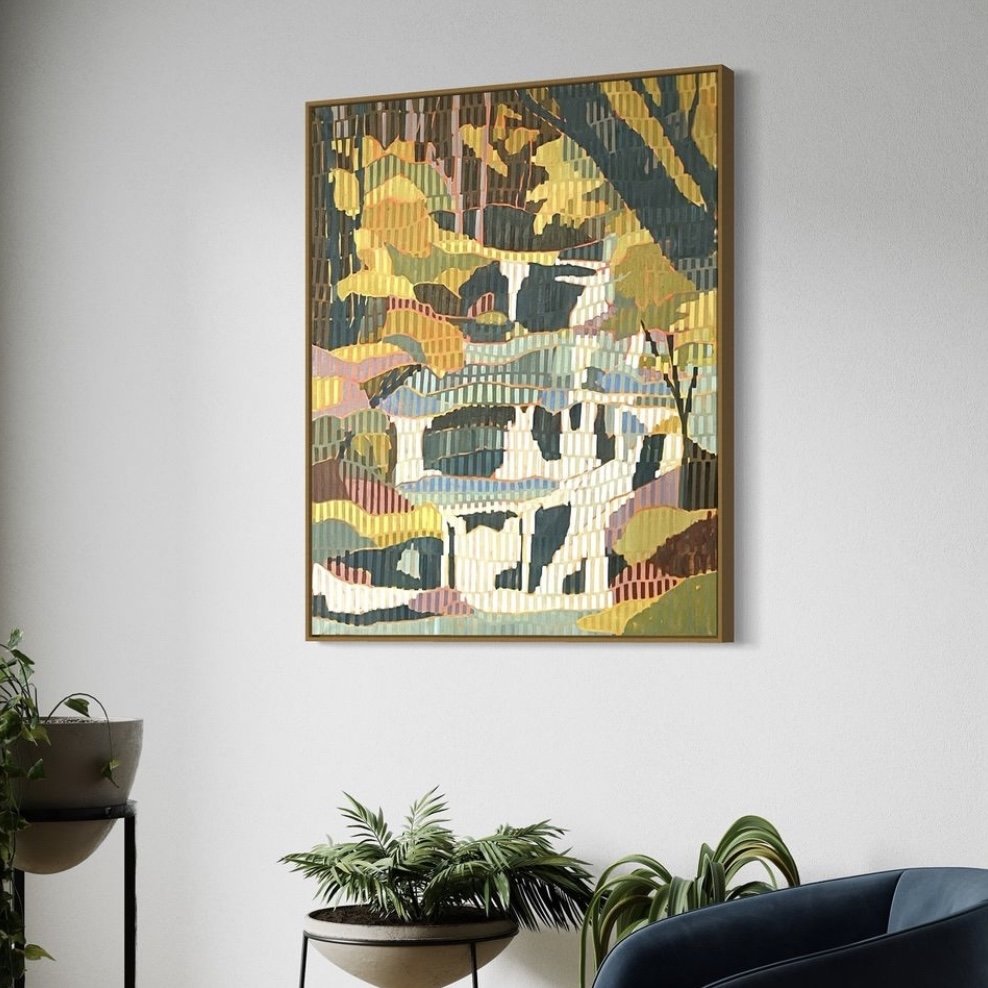Essential Guide to Caring for Original Art
Owning an original piece of art is a rewarding experience. It brings aesthetic appeal, conversational interest, and sophistication to your home. Yet, you can’t just hang it on the wall, forget about it, and expect it to stay in pristine condition forever. An original piece of art needs some special care in order to protect your investment and keep it looking like you purchased it yesterday, for years to come. In this guide, we will delve into taking proper care of your original art, from proper handling techniques, display tips, cleaning and even storage suggestions. Although special care is essential, doing so is simple and quick when following the advice in this detailed guide.
Handling Your Original Art
Tip: Use gloves when handling
your original art
Proper handling techniques are critical when touching an original piece of art. Whether moving the piece to a different spot in your home, taking it down to clean, or packing it away for a move or transportation be sure to keep a few things in mind.
Use clean, dry hands or wear lint-free gloves.
Avoid touching the surface of the artwork.
Support the artwork from the stretcher, never by the frame or front.
Always place the piece on a protected, flat surface away from children or animals.
Displaying Your Art
When displaying an original piece of art by Lïlï Dauphinee, choosing the right location is critical. If placed incorrectly, it can sustain damage over time from UV rays, excess humidity, or accidents. Keep these things in mind to keep your art looking fresh for years:
Avoid displaying art where it is exposed to regular direct sunlight, especially at peak times of the day.
Maintain stable temperature and humidity levels. Avoid placing it close to windows that are opened regularly
Keep large pieces away from high-traffic areas, like foyers or narrow hallways. Only display smaller pieces and those you can display higher or above a piece of furniture to avoid accidental damage.
Framing and Mounting
When you receive an original artwork from Lïlï, it comes rolled and protected in a tube for shipping. This is the best way to transport a painting because it protects the piece and keeps shipping costs down. However, you will need to have the work stretched (and framed if you choose) in order to display it. If you have some woodworking chops and prefer to do it yourself, check out our canvas stretching guide. For those less inclined, seek a professional service for stretching and framing and keep the following in mind:
Use acid-free materials to prevent deterioration.
Ensure proper mounting techniques to support the artwork.
Consider UV-protective glass to shield against light damage, dust and accidental damage.
Cleaning and Maintenance
Like most things, paintings can get dirty over time, as dust and other household particulates circulate in the air and accumulate on surfaces. Regular cleaning is a great way to preserve your painting but it is important to take proper care when doing so. Here are a few safe cleaning practices to keep in mind to avoid damaging your original artwork by Lïlï.
Dust regularly with a soft, dry cloth or a gentle brush.
If using a vacuum, be sure to set it to a low suction mode (if it has one) and use a soft bristle attachment.
Avoid using chemicals or water on the artwork.
If you have access to an air compressor and attachments, set it to low pressure and use a spray tip to blow off dust and debris gently.
Inspect periodically for signs of damage or wear.
Storing Your Art
Not all of us stay in one place forever (we certainly haven’t!), and packing up and moving our art is part of the relocation process. Proper storage conditions are critical when moving or placing a piece into storage for an extended period of time. Keep these things in mind when protecting an original piece of art from the hazards of transportation or long-term storage.
Store in a cool, dry place with stable conditions.
Use protective coverings like acid-free paper or bubble wrap.
Place into a protective box, like this.
Avoid stacking artworks to prevent pressure damage.
Insurance and Documentation: An Important Step in Caring for Original Art
If you are moving be sure to protect your art investment by documenting your art with photos and detailed descriptions, keeping records of purchase and provenance, and even covering potential damage or loss with insurance.
Keeping Your Original Art Collection Pristine
Caring for original art is more than just a good idea; it's a way to honor the beauty and creativity that each piece brings into your home. By following the tips in this guide—handling with care, thoughtful display, proper framing, gentle cleaning, secure storage, and diligent documentation—you can ensure that your art remains vibrant and valuable for as long as you own it. Treat each piece with the reverence it deserves, and you'll not only protect your investment but also continue to enjoy its beauty and inspiration every day.
In order to care for original art, you must first own it! Start a new collection today by visiting Lïlï’s shop to explore timeless pieces that can enrich your home and connect you to nature.




